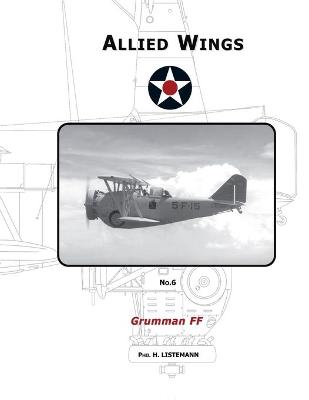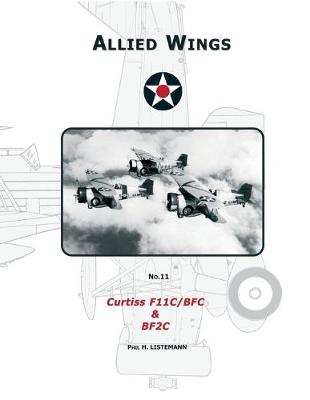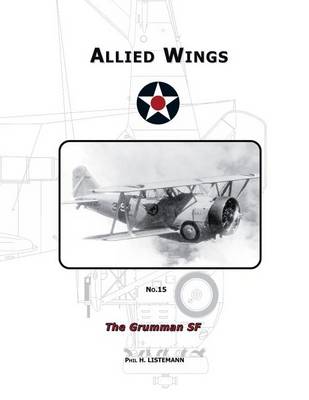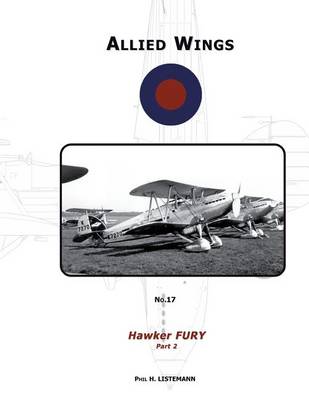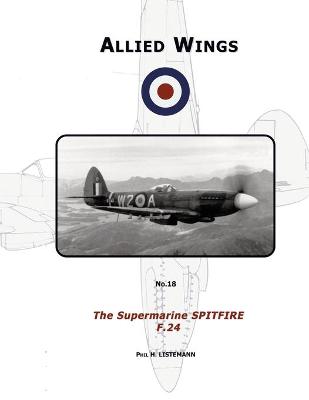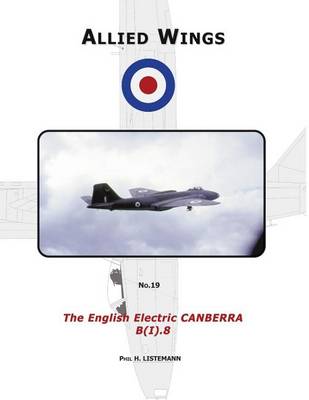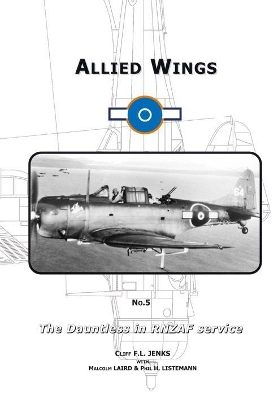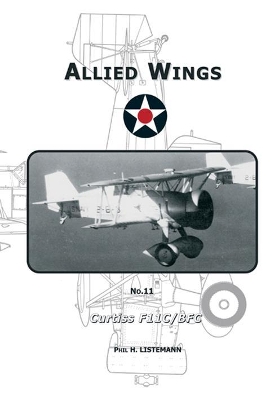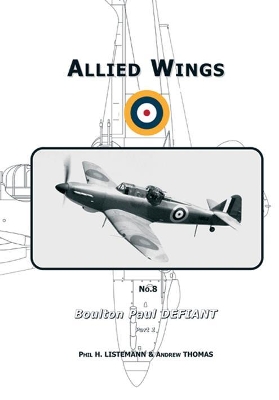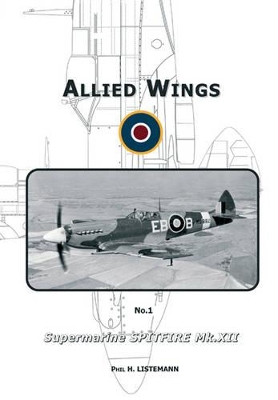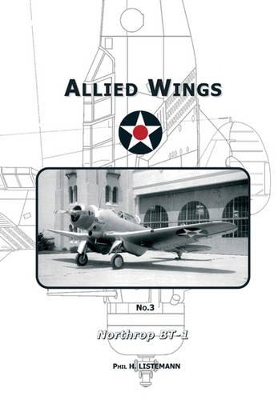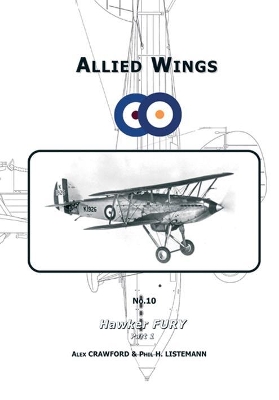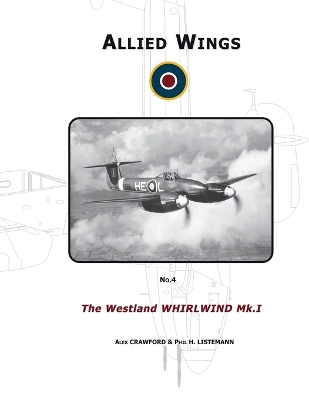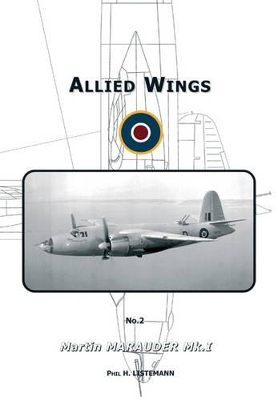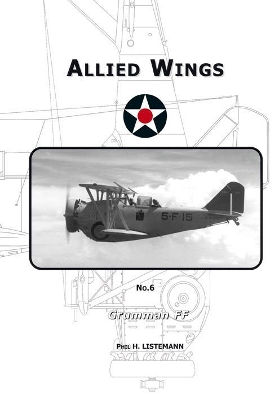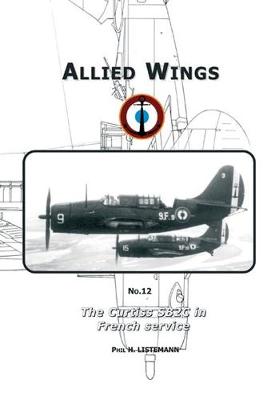ALLIED WINGS
7 primary works • 18 total works
Book 6
Book 11
Book 15
Book 17
Book 18
Book 19
Book 20
The Dauntless in Rnzaf Service
by Cliff J.F. Jenks, Malcolm Laird, and Phil Listemann
Under the command of Squadron Leader T.J. McLean de Lange, No.25 Squadron was created on 31 July 1943, as the RNZAF's sole SBD Dauntless dive bomber squadron.
In March 1944, No.25 began operations on Guadalcanal; objective Rabaul. In eight weeks 530 sorties were flown for the loss of only five aircraft. However, due to developments in bomber aircraft, the SBD Dauntless was soon becoming supplanted by the SB2C Helldiver and the Squadron was disbanded at the end of May. All pilots were transferred to RNZAF Corsair squadrons to continue the fight.
Each Dauntless aircraft flown by the squadron is discussed and illustrated in detail, along with combat history and specifications to provide a complete history of this impressive aircraft.
If Curtiss was still selling other types of aircraft to the USN, mainly observation or training aircraft, not to have fighters in the front line units meant a lack of prestige for the manufacturer. The Curtiss F11C was then developed with this goal in mind, but it was not a new design as such, being a improvement of previous Curtiss type only and eventually proved to be quite unsuccessful.
Shortly after the beginning of its career, the Curtiss F11C was converted into a dive-bomber as BFC and they were used until 1939. As its successor, the Curtiss BF2C was a failure, the Curtiss F11C/BFC can be seen as the last true fighter of this manufacturer purchased by the USN.
As for the other USN titles of this series, this issue includes each aircraft's history with the full accident reports, which give the best reference on this type for modellers and historians alike.
About the Authors
Both Listemann and Laird are well-respected aviation historians and have written many books and articles on the subject.
Boulton Paul Defiant (Part 1)
by Andrew Thomas, Phil H Listemann, and Malcolm Laird
The possibility of enemy bombers, and not just German ones, once again flying over the country and dropping their deadly load on British soil had troubled them ever since. In the 1930s, a fighter fitted with a gun turret was considered to be an effective way of attacking bombers and would be a feasible alternative to conventional fighters.
The result of this concept was the Defiant, which was developed to meet this operational requirement. After a promising start during the dark days of the Battle of France, the Defiant was withdrawn from day operations, after having sustained heavy losses during the Battle of Britain.
This first volume is dedicated to the Defiant and narrates its development as a day fighter. Although ultimately the concept proved a failure, the blame does not rest solely on the Defiant itself - assumptions taken by some writers in the past - but many other factors also contributed to its failure as detailed in this volume.
Over 30 photographs, many of which previously unpublished, and profile artwork are included, as well as specification tables and pilot listings.
About the Author
All three authors are acclaimed aviation historians, with numerous publications and experience between them.
The Brigand consisted of a crew of three men and was 46ft 5in. long with a wingspan of 72ft 4in. It was capable of a maximum speed of 385mph at 13,700ft. It was originally conceived of as a faster version of the Beaufighter for long range torpedo work and anti-shipping strikes. However an official decision changed its role to that of a bomber. The Brigand served in Malaya and Kenya before a number of design flaws such as suspect mainspars caused it to be withdrawn from service.
The full story of the Brigand in RAF service is described In 48 pages including maps, colour profiles and over 30 photos.
The single-stage Griffon engine (II or IV) gave the aircraft superb low and medium level performance, although the Mk XII's performance declined at higher altitudes: because of this all production aircraft had"clipped" wings. In comparative tests with a Mk IX it was 14 mph (23 km/h) faster at sea level, but above 20,000 ft (6,100 m) it had become slower. Handling, however, was considered to be better than previous Spitfire marks, and the clipped wings conferred excellent manoeuvrablity through enhanced aileron response.
At low altitude it was one of the fastest aircraft in the world; in one speed trial a prototype Mk. XII (DP845), piloted by Jeffrey Quill raced ahead of a Hawker Typhoon and a captured Focke-Wulf Fw 190 to the amazement of the dignitaries present. However pilots found it difficult to exploit this advantage in combat as German pilots were reluctant to be drawn into dogfights with Spitfires of any type below 20,000 feet (6,100 m). When the Mk XII was able to engage in combat it was a formidable fighter and several Fw 190s and Bf 109-Gs fell victim to it. The Mk XII's speed advantage at lower altitudes again became useful near the end of its front line service in Summer 1944, in which it shot down a respectable number of V-1 Flying Bombs. The Mk XII variant was retired in September 1944.
The design of the initial version began in 1935. A 700 hp Pratt and Whitney XR-1535-66 Twin Wasp Jr. double row, radial air-cooled engine powered the aircraft. The aircraft had slotted flaps and a landing gear that partially retracted.
The next iteration of the BT, designated the XBT-1 was equipped with a 750 hp R-1535 engine. This aircraft was followed in 1936 by the BT-1 that was powered by an 825 hp Pratt and Whitney R-1535-94 engine. One of the BT-1 aircraft was modified with a fixed tricycle landing gear and was the first such aircraft to land on an aircraft carrier.
The U.S. Navy placed an order for 54 BT-1s in 1936 with the aircraft entering service during 1938. The BT-1s served on the USS Yorktown and USS Enterprise. The type was not a success in service due to poor handling characteristics, especially at low speeds,"a fatal flaw in a carrier based aircraft." It was also prone to unexpected rolls and a number of aircraft were lost in crashes.
Despite its shortcomings, the BT-1 led the way to its successor, the SBD Dauntless, which wrote itself into the pages of the US Navy's history during the desperate, and decisive, battles of 1942 and 1943 which took place in the Pacific.
This first volume on the Fury narrates the development and production of the Fury and the career of the Fury Mk.I in the RAF, including a brief service at the beginning of World War II. This part includes also the full story of the Fury in South Africa, which fought against the Italians in East Africa in 1940-1941, where despite their almost obsolescence, they destroyed 2 Caproni bombers as well as strafing many airfields, destroying grounded fighters and bombers. The SAAF Furies were eventually withdrawn from use in 1943.
Using new information on this period in the Fury's career, this volume provides the most complete story on the Furies in the SAAF. Illustrated with over 40 photos and 6 colour profiles, it provides a unique new treatment on the Fury for historians and modellers alike.
About the Author
All three authors are acclaimed aviation historians, with numerous publications and experience between them.
The Westland Whirlwind belongs to that category of aircraft which entered production but failed to live up to their designers' expectations. Its unreliable engines can be seen as a major reason for this but, even with better engines, the results would probably have been the same, as the concept of a twin-engined fighter aircraft capable of meeting single-engined fighters escorting bombers formations on an equal footing was fallacious, as combat in WW2 was soon to prove.
The true story of the Whirwind and the pilots who flew it is here told in 52 pages with almost 50 photographs, many being published for the first time.
The first medium bomber in the Pacific Theatre in early 1942, it was also used in the Mediterranean Theatre and North West Europe. The plane distinguished itself as"the chief bombardment weapon on the Western Front" according to an U.S. Army Air Forces dispatch from 1946, and later variants maintained the lowest loss record of any combat aircraft during World War II. Its late-war loss record stands in sharp contrast to its unofficial nickname "The Widowmaker" - earned due to early models' high rate of accidents during takeoff.
A total of 5,288 were produced between February 1941 and March 1945
Even though the history of the Marauder is generally pretty well known, the history of the Marauder Mk.I has been overshadowed for many reasons, the main one being that only 71 Marauders received the designation of Marauder Mk.I. With so few aircraft only one unit could be equipped with this type and this was No.14 Squadron in the Middle East. Manned by aggressive aircrew, coming from all the Dominions, the Marauder Mk.I was used for two years in the unexpected role of maritime reconnaissance. Sorties were normally flown by a single aircraft and the Marauder Mk.I recorded an impressive record against the Luftwaffe, showing that the aircraft was able to defend itself and was far from being an easy prey, but sustaining heavy losses with 25 aircraft lost on operations.
It was introduced in 1933, and was Leroy Grumman's first aircraft design for the US Navy. It was a two-seat design, with an enclosed cockpit, metal fuselage and wings covered largely in fabric. It was also the first USN fighter to use retractable landing gear.
The full history of this fighter, of which less than 30 examples were produced, is covered in detail. Though the Grumman's career as a fighter was short, with only one front-line USN unit using it in operation for just three years, it had a much longer career when it was used as a fighter trainer and was not withdrawn from use until 1942.
Each aircraft's history is fully documented and the book includes over 30 photographs and 11 colour profiles. It is exceptional reference for historians and modellers alike.
Delivered under MDAP agreement, they arrived in the area in 1951 and the SB2C proved again that it was a very capable machine. They were intensively used during three years including during the decisive battle of Diem Bien Phu, which sealed the end of the presence of the French in Indochina. An exciting and exotic topic for anyone interested in the SB2C Helldiver.
About the Authors
Both Listemann and Laird are well-respected aviation historians and have written many books and articles on the subject.
